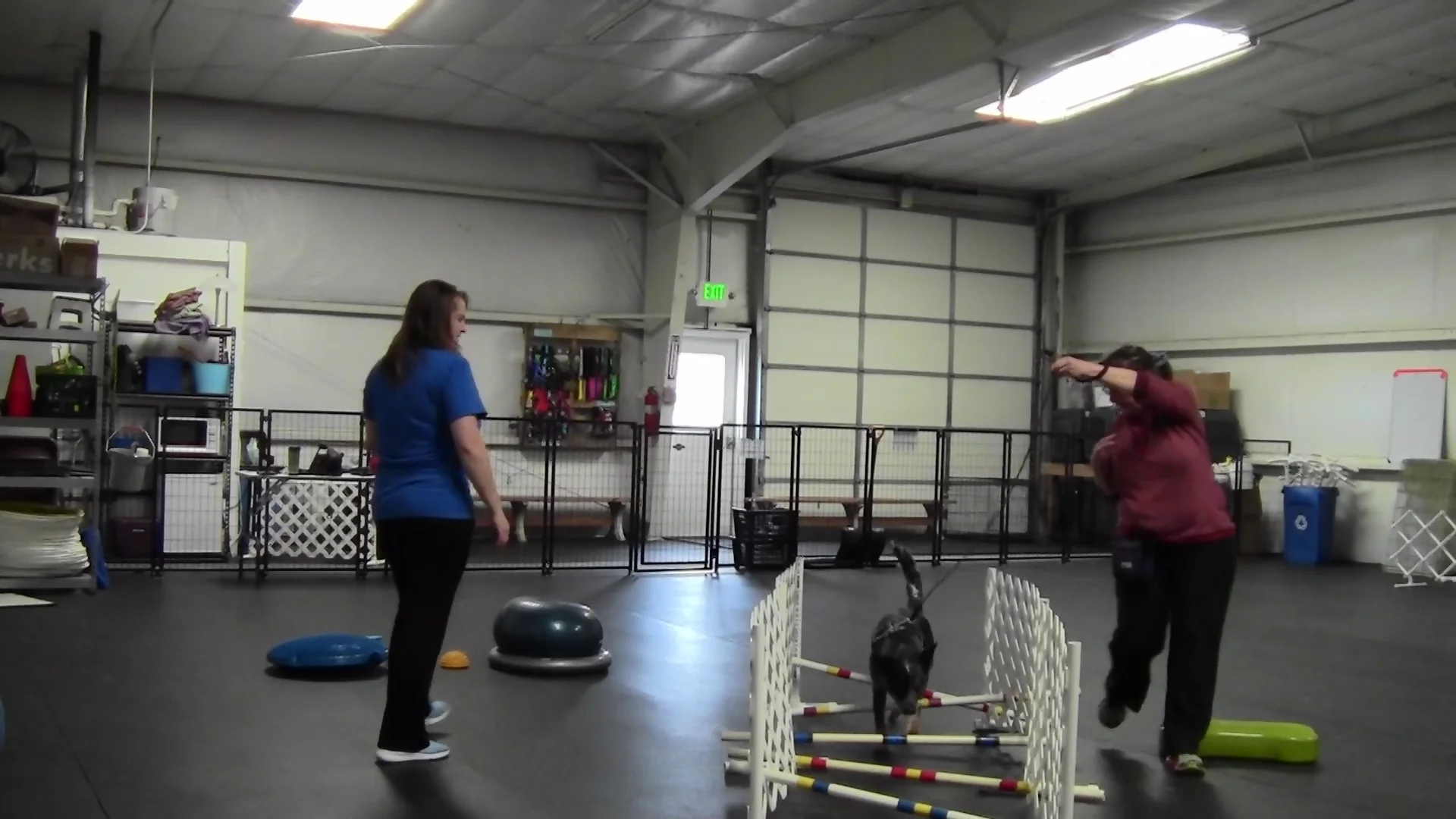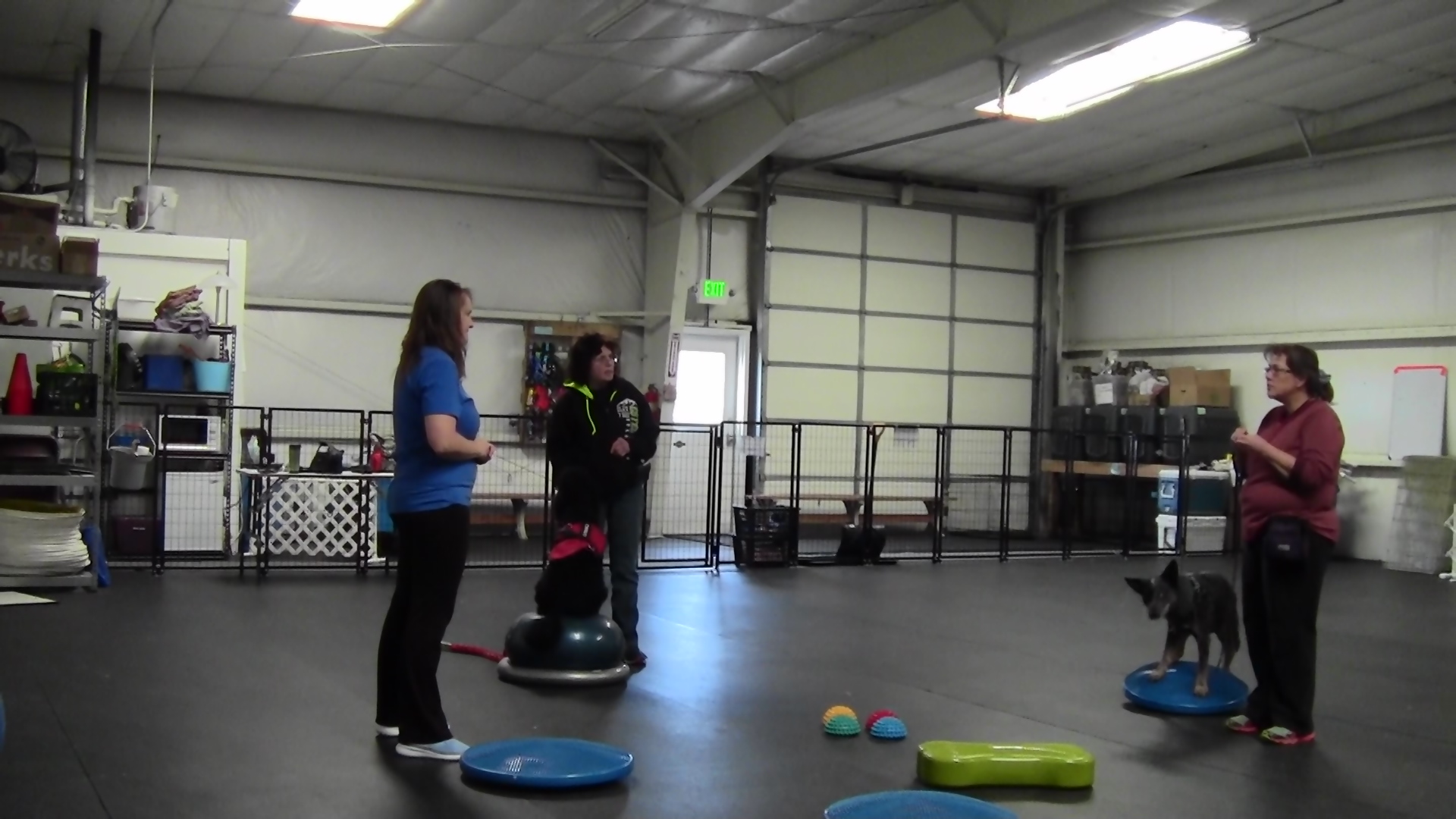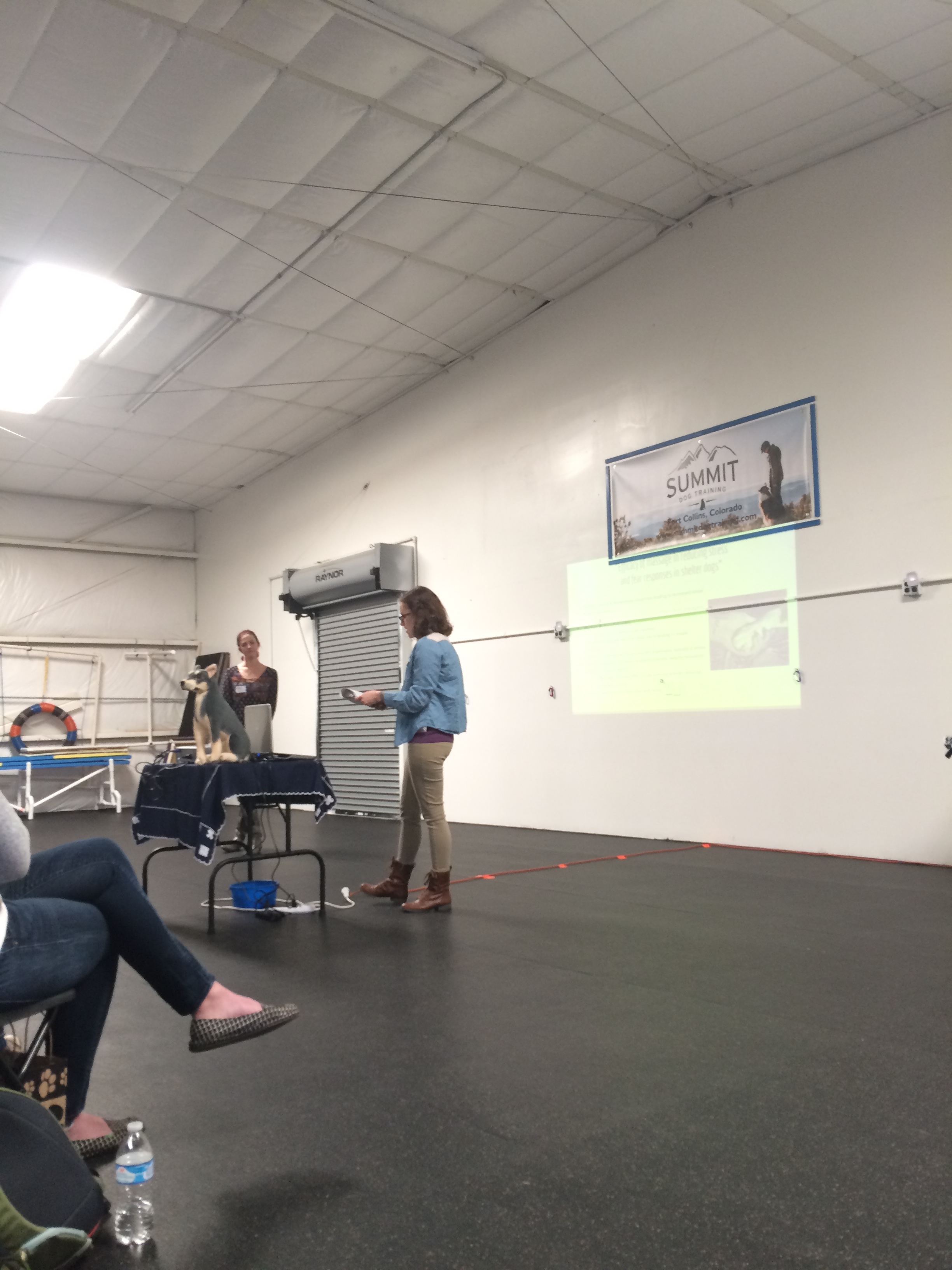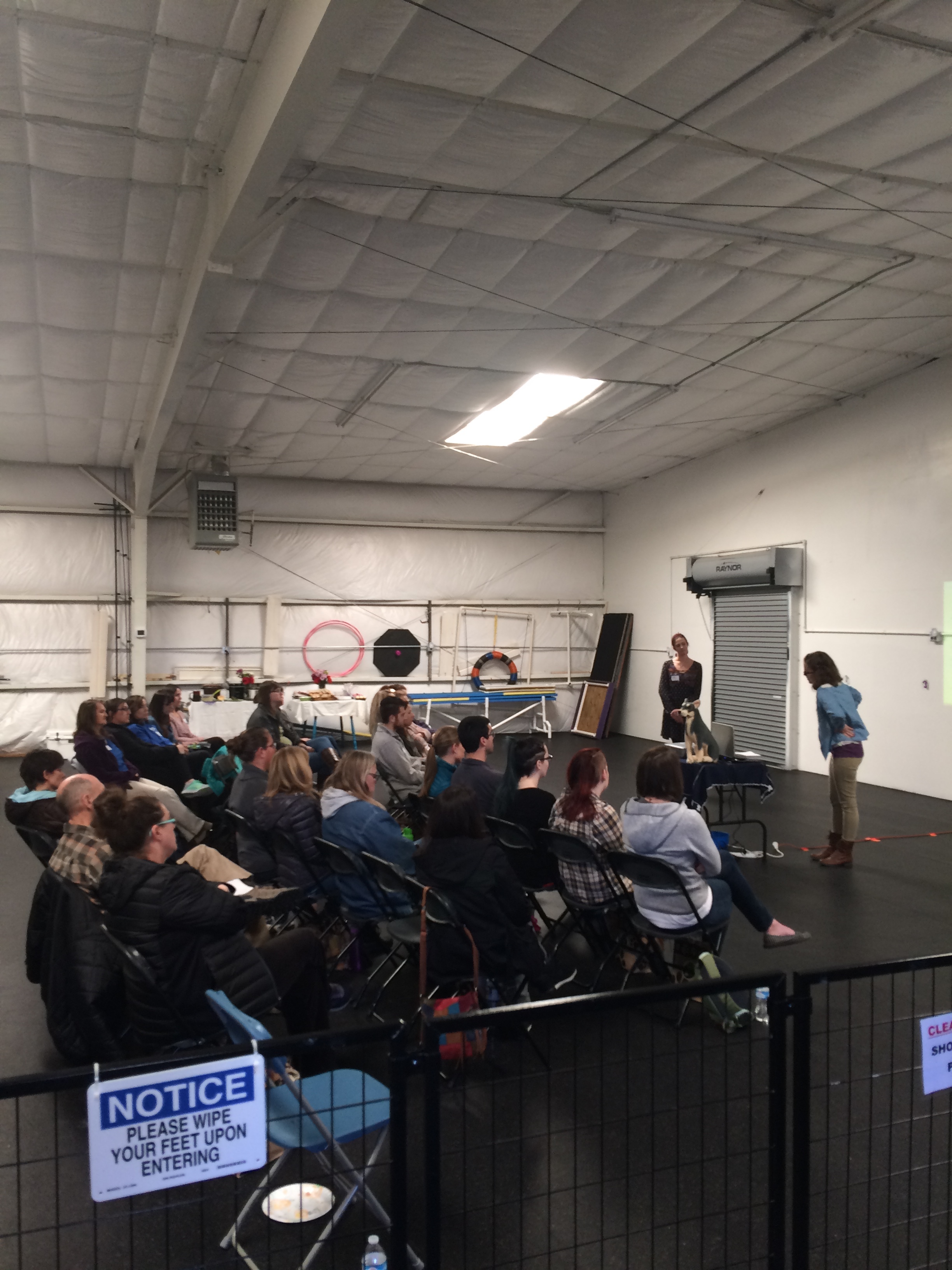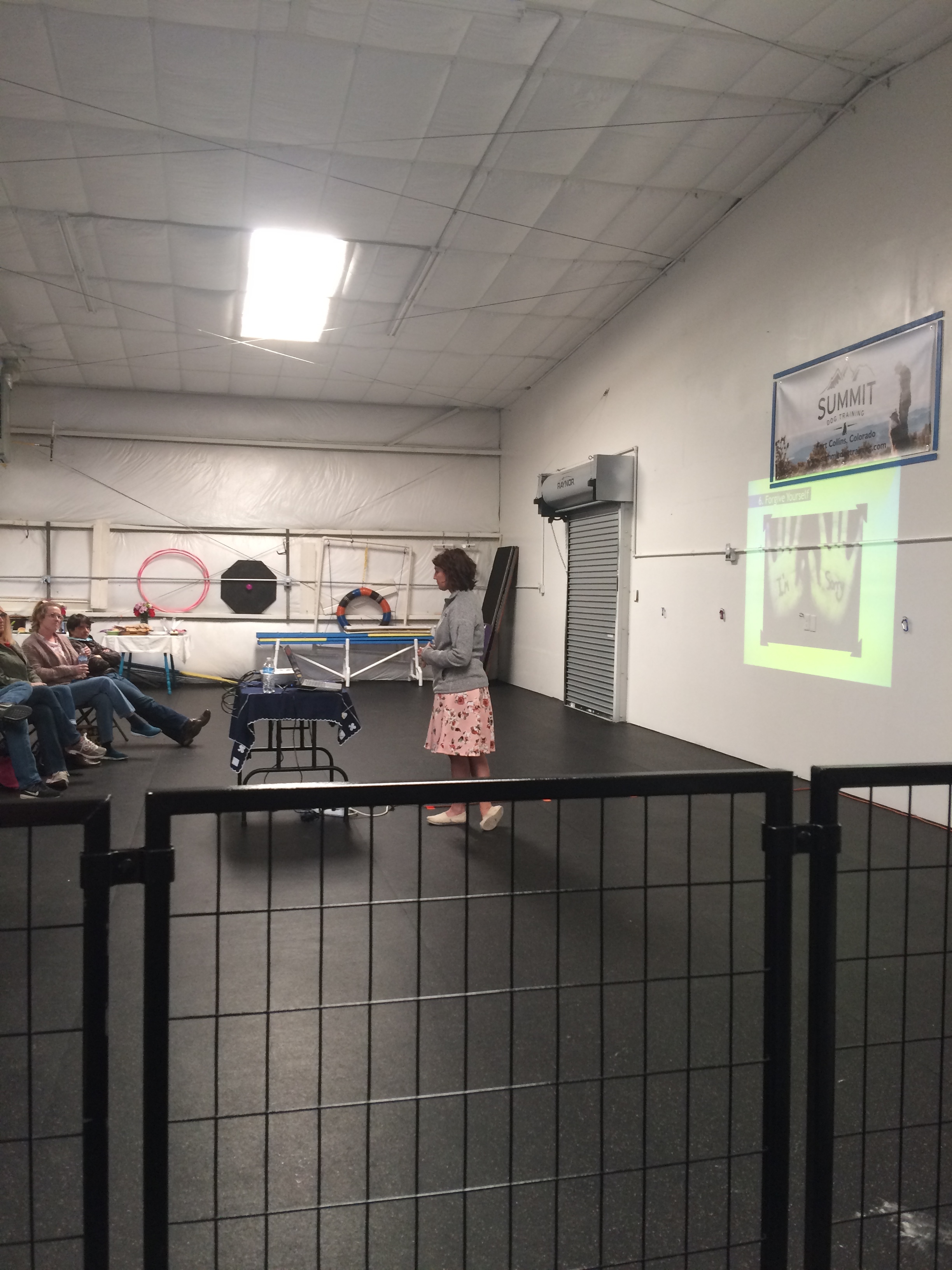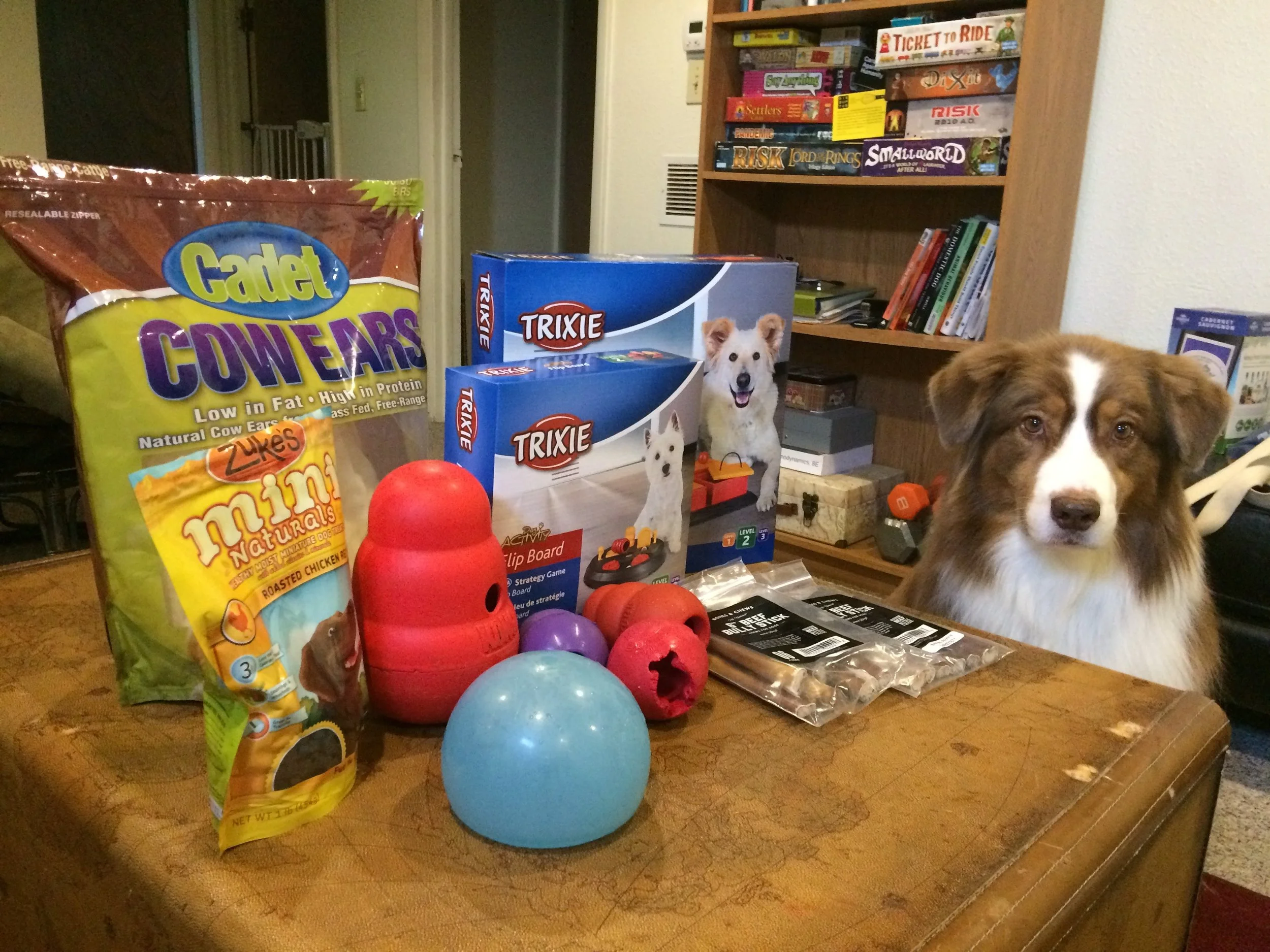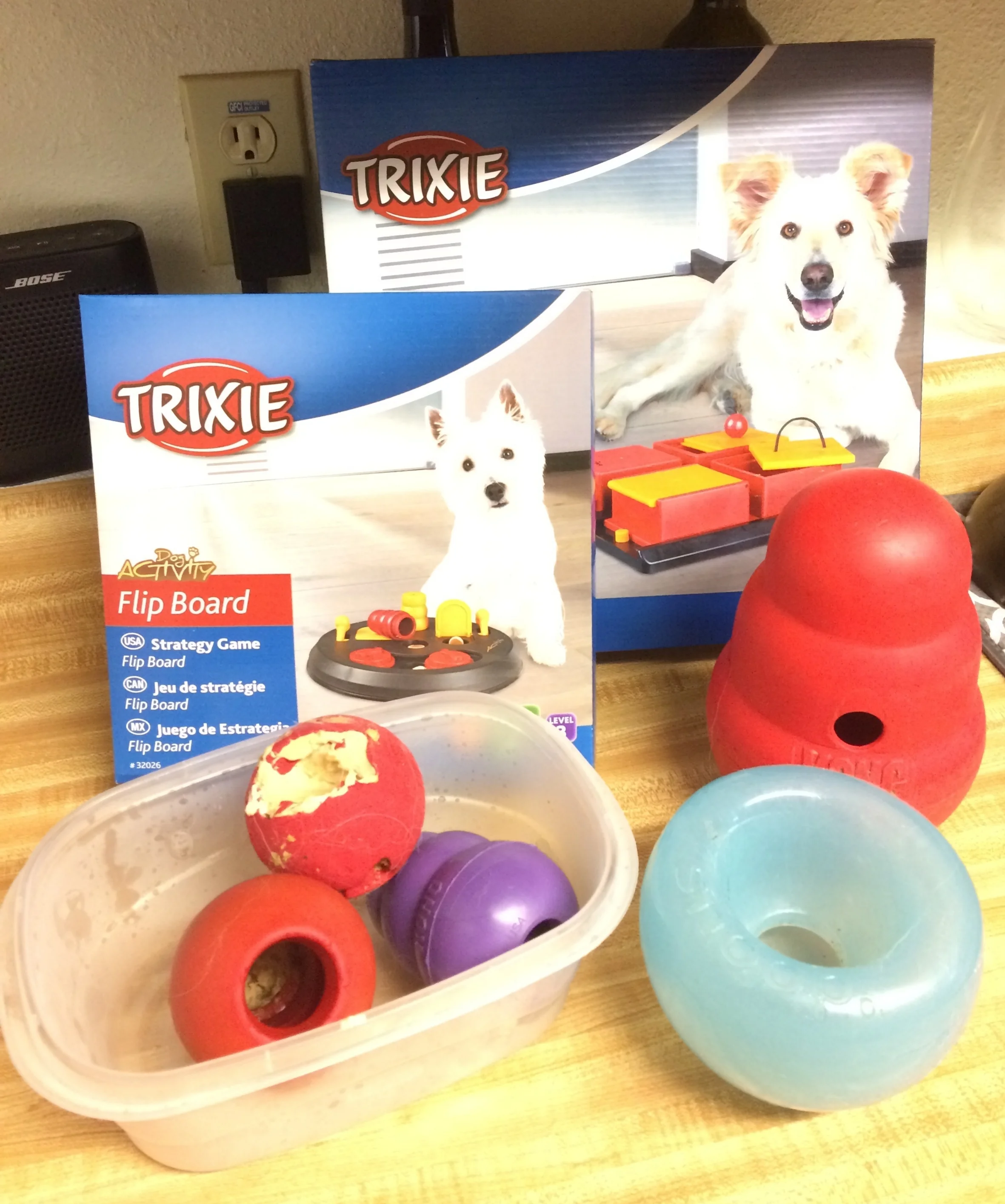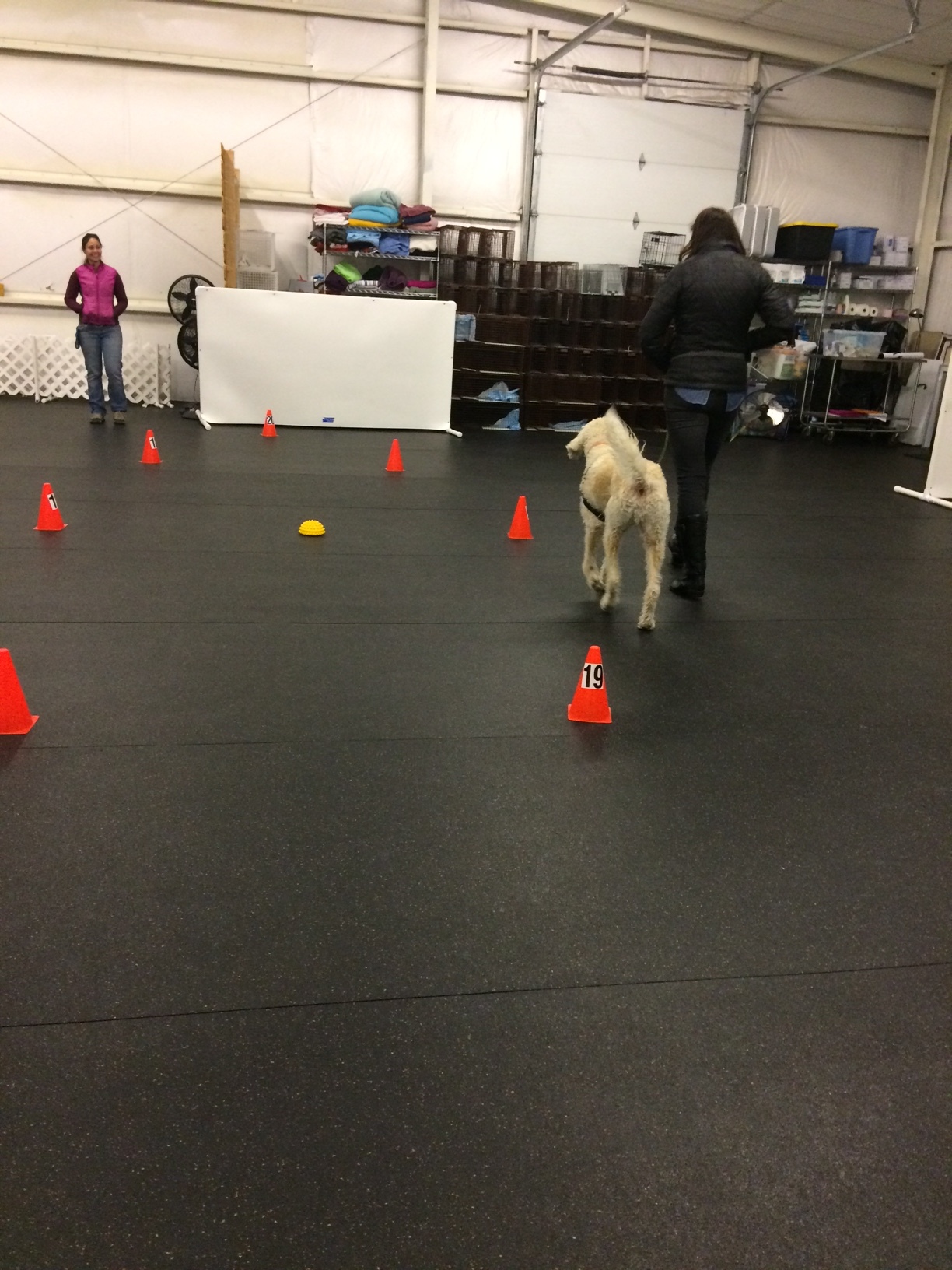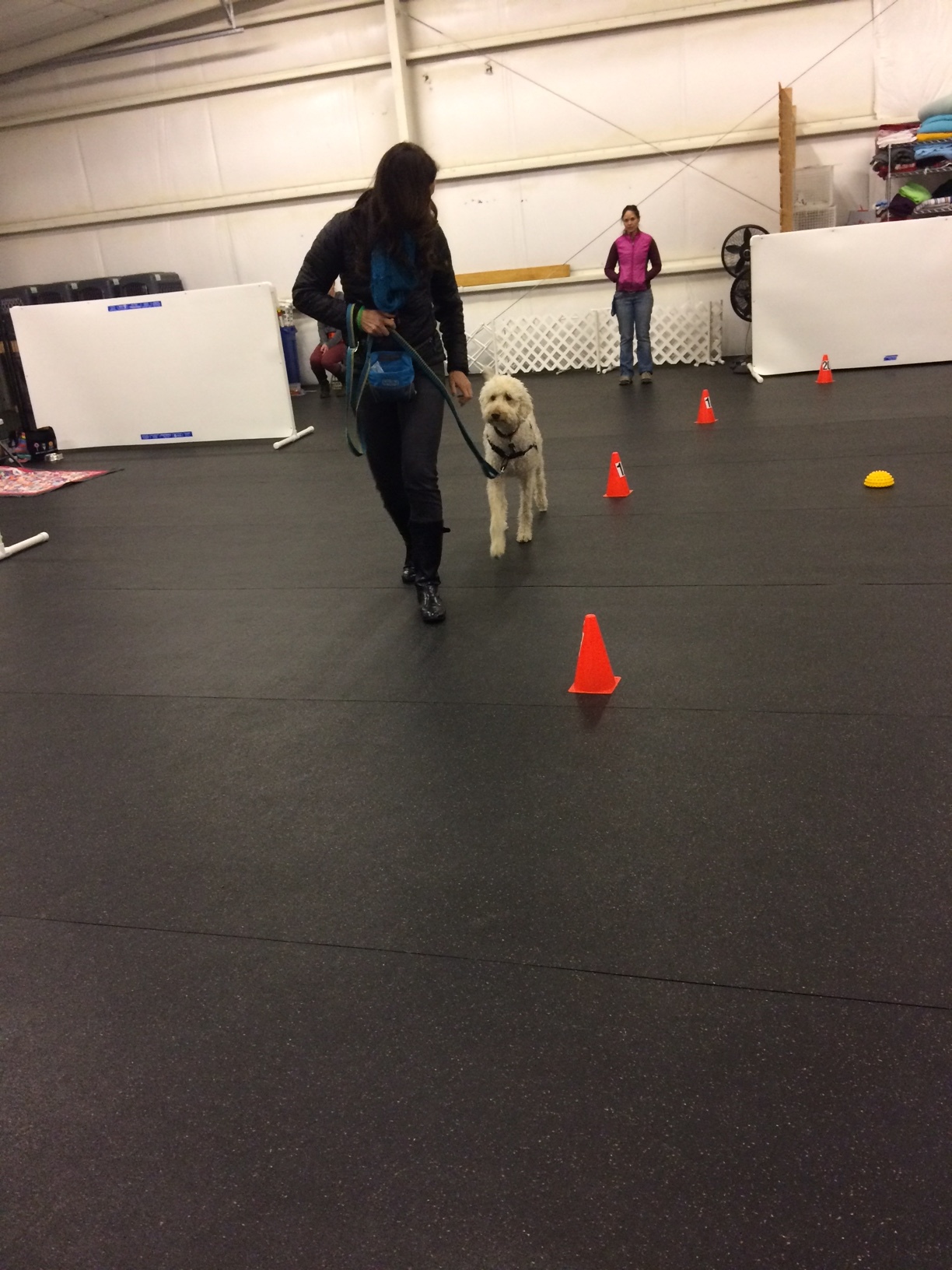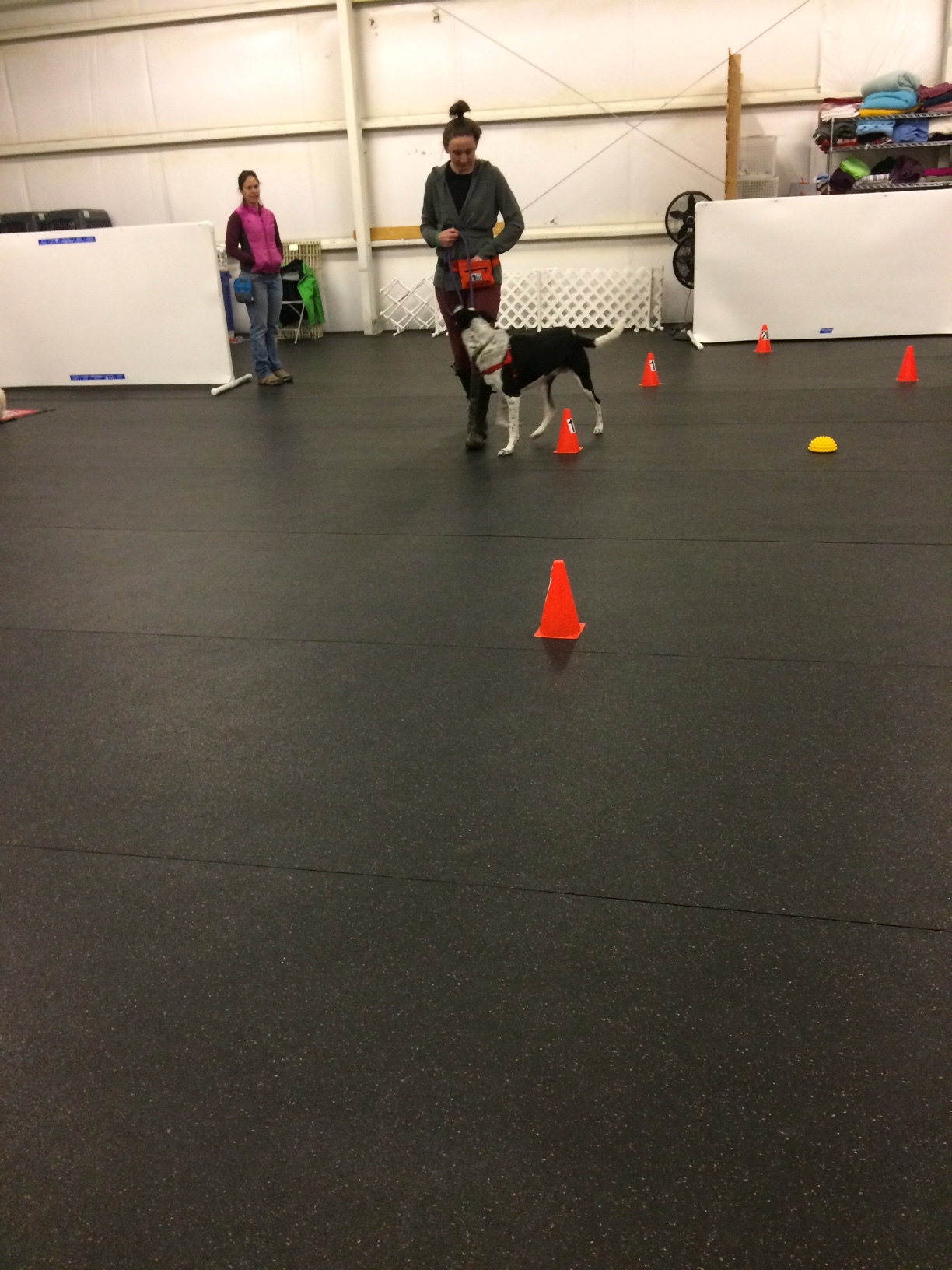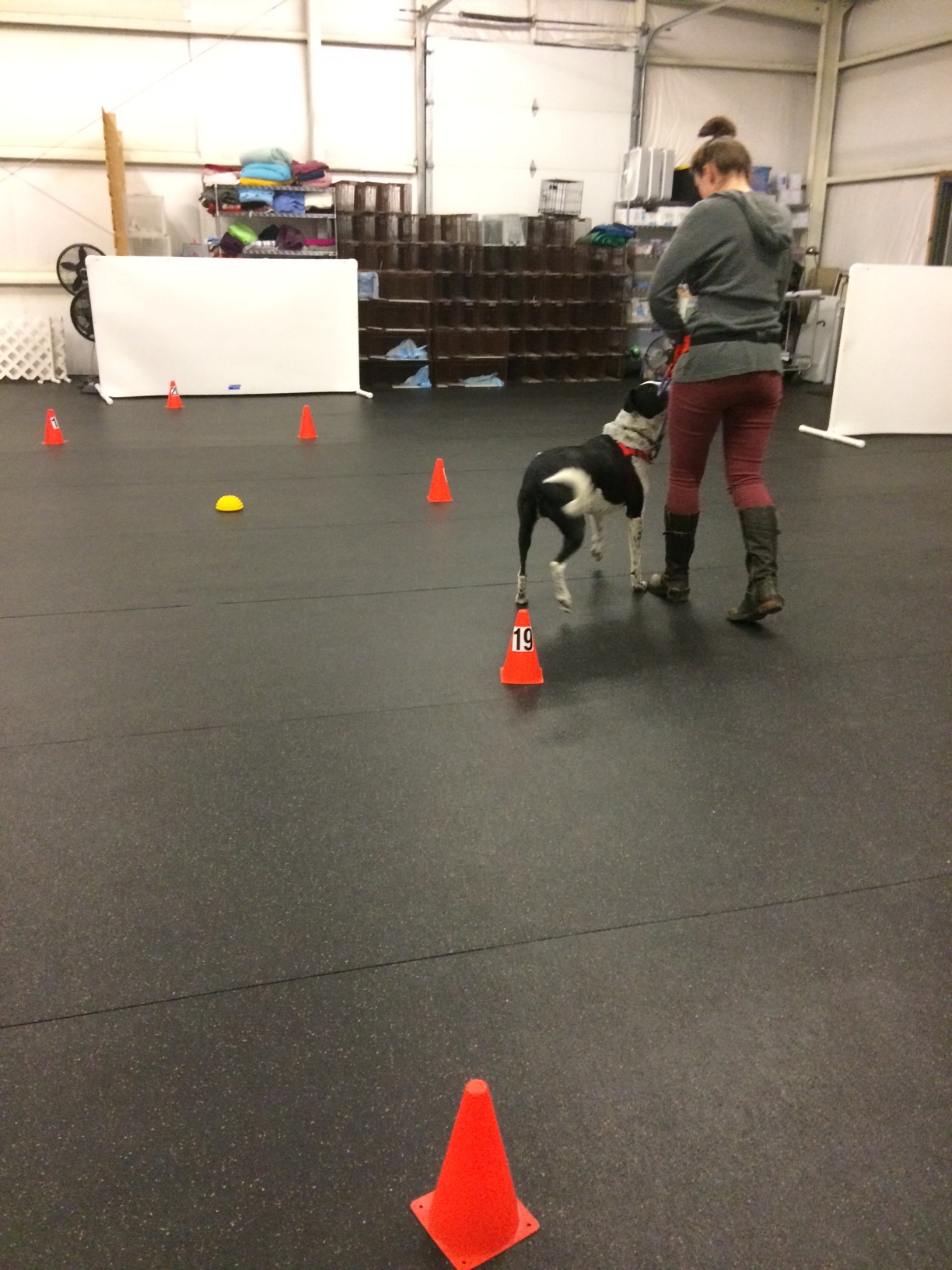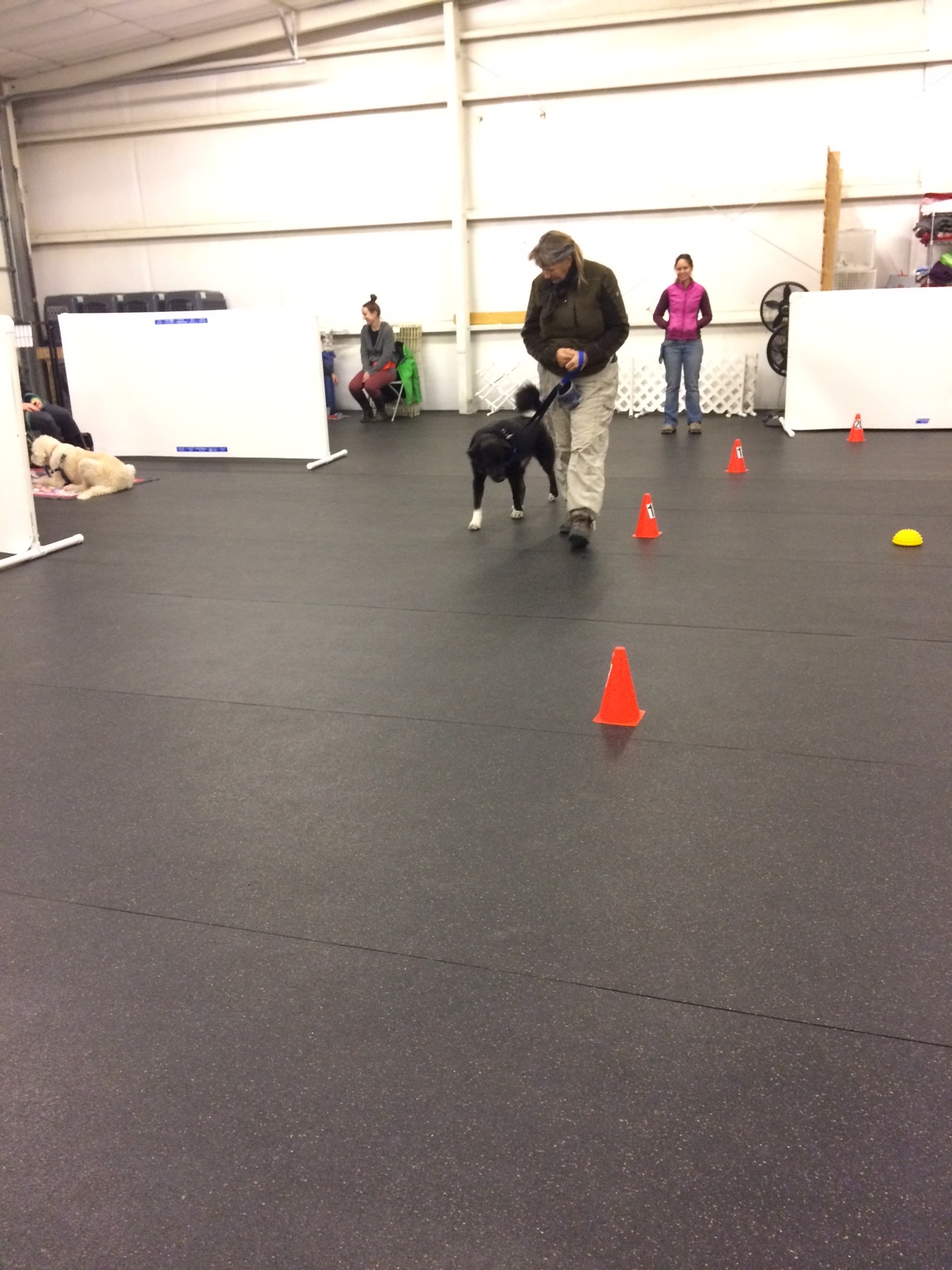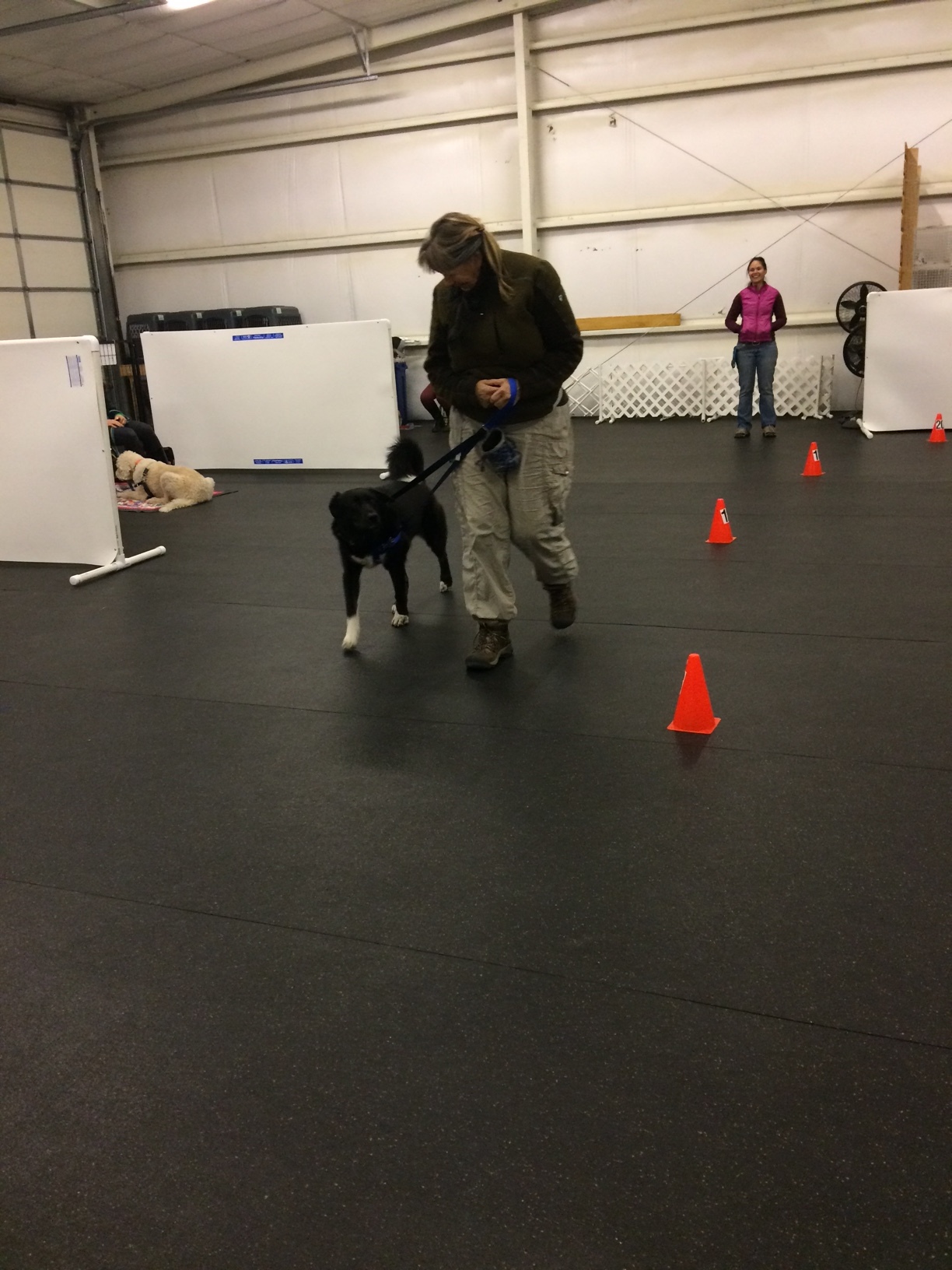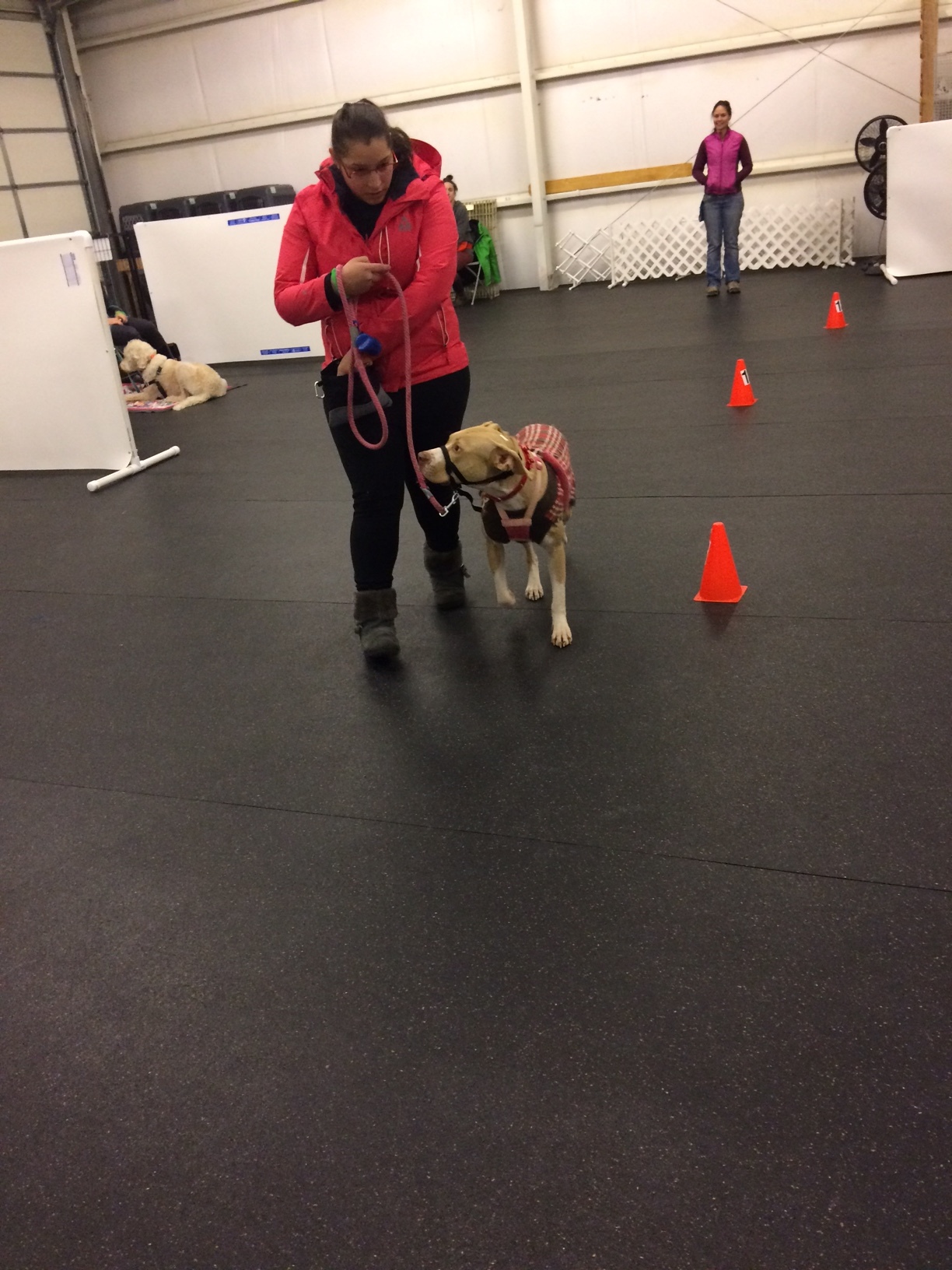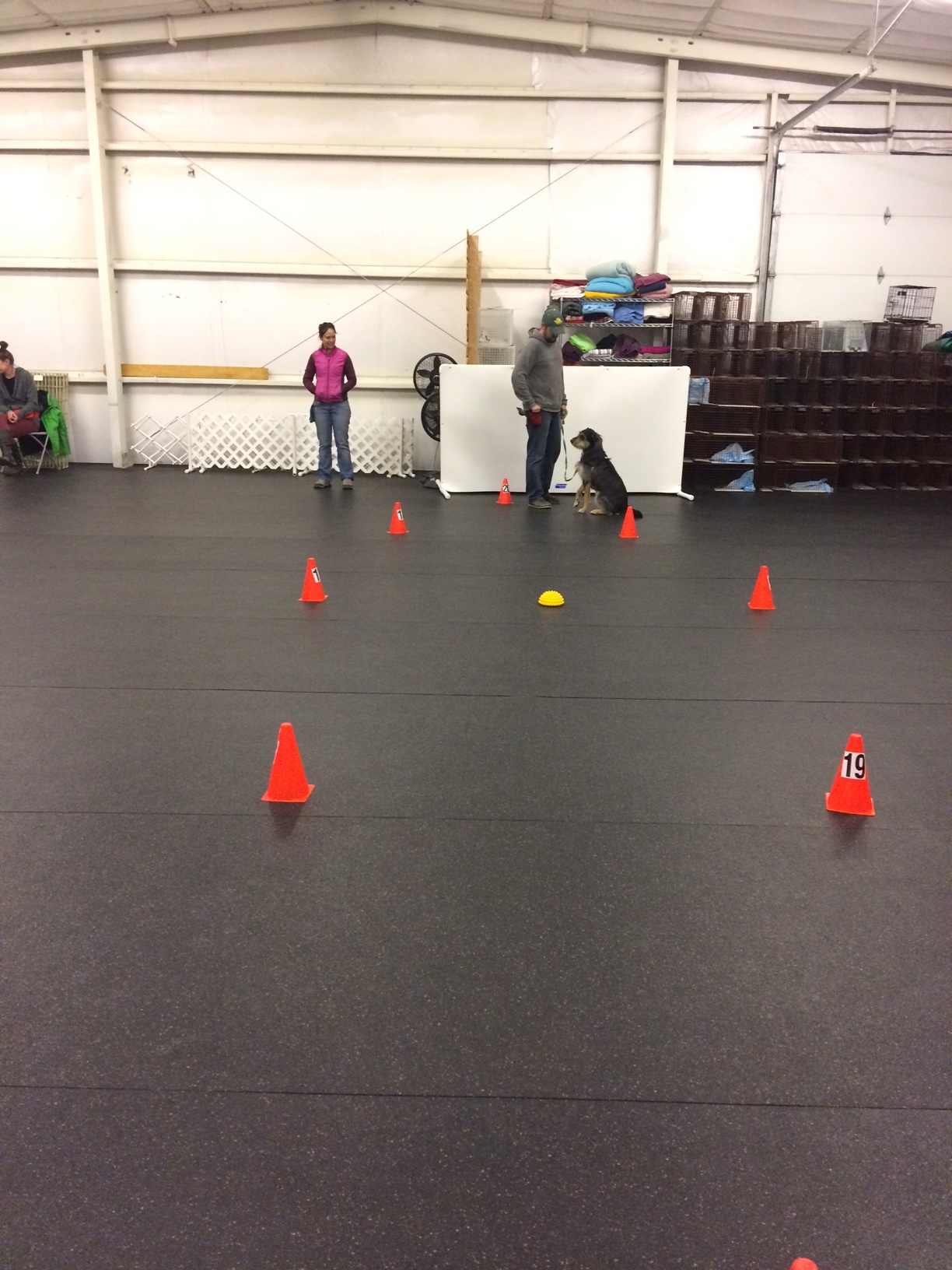Guest post by Jennifer Holmes, a Certified Veterinary Technician (CVT), a Certified Canine Rehabilitation Practitioner (CCRP), and a Fit Paws - Master Trainer (FP-MT). Her company, K9FitnessWorks, offers group classes & private lessons specializing in canine fitness.
April is National Canine Fitness Month! What is Canine fitness?
You may have seen articles, Facebook posts, or seminars on canine fitness. What is it? Why would my dog want to take a fitness class or even go to a Certified Canine Fitness Trainer?
Fitness by definition is the quality of being conditioned physically to perform a role or task in life. When we think of our fitness it brings up images of the gym, outdoor activities, or working with a trainer for a specific sport purpose. Fitness can also be a way to improve muscle, tendon, and nerve health so you and your dog can function at the highest health capacity in your favorite activities.
Ryder loves Canine Fitness!
It fills my heart with passion to talk about the benefits of a creative, fun exercise plan for your pup and you to bond. In the 70s and 80s I taught my dogs to sit, down, and shake because it was fun time with my dog. I did not realize I was also teaching them body awareness. Body awareness is the dog knowing where it’s body is in a certain space. Why is this important? When your dog runs for a ball or catch a Frisbee in the air their body spins and twist in different directions. If their muscles are trained to handle the speed and spins they will safely grab the ball or catch the Frisbee. When their muscles are not conditioned because they have been in the house and yard all week then you play on the weekend, your dog can have muscle, tendon, or disk injuries during spins to catch their favorite toy. As a Certified Canine Rehabilitation Practitioner since 2012, I have seen the various injuries that can occur during innocent ball throwing. The biggest impact owners can do for their dogs is a creative exercise plan to strengthen up their muscles, tendons, and nerves.
3 tips you can do RIGHT. NOW. to improve your dog body awareness:
1. A quick couple minute warmup before ball or Frisbee play by a quick brisk walk to wake the body up, stimulate the nerves, and improve muscle reaction time.
2. A few repeated sit-to-stand exercises to warm up key muscles they will use to play ball or catch the Frisbee. (Cue your dog to sit, then cue them to stand, then back to sit, etc.)
3. Throwing the ball or Frisbee straight to limit the amount of twisting they have to do while in action to catch the toy.
Echo & Ryder balance like pros - working on those core muscles that will help them avoid injury in agility!
At Summit Dog Training, we offer fitness classes to help you help your dog have the fittest life they can! Our Intro to Fitness class covers warmups, cool downs, and more creative ways to strengthen your dog for play. I also offer 1-on-1 fitness sessions to create a specific plan for you and your pup to live a long happy life.
The next Intro to Fitness classes will be starting Saturday, May 13th at 9:00am & Saturday, June 17th at 10:00am. Check out the Summit Dog Training website for more info! In honor of Canine Fitness Month, we are offering 10% off fitness class tuition through April 30th. Use promo code APRILFIT.
A couple of students from our last Intro to Fitness class had this to say:
“Thanks Jennifer! It was a super fun class.” - Shelley
“Echo and I just finished a series of 6 weeks in Jennifer's Canine Sport Dog Fitness Class. By the end of the classes I gained so much knowledge on how to strengthen and assess Echo's body condition. It was so much fun working with Jennifer and I would highly recommend her talents to all dog owners whether in a canine sporting event or just with a family pet.” - Barb


